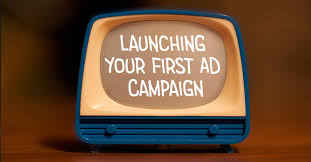Mastering Ad Campaigns: A Beginner's Guide To Successful Advertising
In today's digital age, running ad campaigns is an essential component of any successful marketing strategy. With the plethora of advertising platforms available, it's crucial to understand how to set up and manage ad campaigns effectively to reach your target audience and achieve your marketing goals. In this beginner's guide, we'll explore the basics of running ad campaigns, including ad management tools, campaign setup, different ad formats and targeting options, and strategies for optimizing campaign performance.
Exploring Ad Management Tools on Different Platforms:
1. Facebook Ads Manager: Facebook's Ads Manager is a comprehensive tool for creating, managing, and tracking ad campaigns across Facebook, Instagram, Messenger, and Audience Network. It offers advanced targeting options, budgeting controls, and detailed analytics to monitor campaign performance.
2. Google Ads: Google Ads (formerly known as Google AdWords) is Google's advertising platform that allows you to create and manage ads across Google Search, Display Network, YouTube, and more. It offers powerful targeting options, keyword-based advertising, and bidding strategies to maximize your ad's reach and effectiveness.
3. LinkedIn Ads Manager: LinkedIn's Ads Manager is designed for creating and managing ads on the LinkedIn platform. It offers targeting options based on professional attributes, such as job title, company size, industry, and more, making it ideal for B2B advertising.
4. TikTok Ads Manager: TikTok's Ads Manager is a self-serve platform for creating and managing ads on the TikTok platform. It offers various ad formats, including in-feed ads, branded effects, and hashtag challenges, to engage with TikTok's diverse audience.
Setting Up and Running a Basic Ad Campaign:
1. Define Your Goals: Start by defining your campaign objectives, whether it's to drive website traffic, generate leads, increase brand awareness, or boost sales.
2. Choose Your Platform: Select the advertising platform(s) that best align with your goals and target audience. Consider factors such as audience demographics, ad formats, and budget requirements.
3. Set Your Budget and Schedule: Determine your advertising budget and set a schedule for your campaign, including start and end dates, daily or lifetime budget, and bidding strategy.
4. Create Your Ad: Design your ad creative, including images, videos, ad copy, and call-to-action (CTA). Choose the ad format that best suits your campaign objectives and target audience.
5. Target Your Audience: Use the platform's targeting options to reach your desired audience based on demographics, interests, behaviors, and other criteria. Refine your targeting to ensure your ad reaches the most relevant audience.
6. Launch Your Campaign: Review your campaign settings, double-check your ad creative, and launch your ad campaign. Monitor its performance closely to make adjustments as needed.
Understanding Different Ad Formats and Targeting Options:
1. Ad Formats: Ad formats vary across platforms and may include image ads, video ads, carousel ads, slideshow ads, stories ads, and more. Choose the ad format that best suits your campaign objectives and audience preferences.
2. Targeting Options: Targeting options allow you to reach specific audiences based on demographics, interests, behaviors, and other criteria. Common targeting options include location targeting, demographic targeting, interest targeting, and custom audience targeting.
Optimizing Campaigns for Better Results:
1. Monitor Performance: Keep a close eye on your campaign performance metrics, including impressions, clicks, click-through rate (CTR), conversion rate, and return on ad spend (ROAS). Use this data to identify areas for improvement and optimization.
2. Test and Iterate: Experiment with different ad creatives, messaging, targeting options, and bidding strategies to optimize your campaign performance. A/B testing allows you to compare different elements of your ads to see what resonates best with your audience.
3. Adjust Bids and Budgets: Fine-tune your bidding strategy and budget allocation based on performance data. Increase bids for high-performing ads and target audiences, and reallocate budgets to campaigns that deliver the best results.
4. Optimize Landing Pages: Ensure that your ad's destination landing page is optimized for conversions, with clear messaging, compelling visuals, and a seamless user experience. Test different landing page designs and content to improve conversion rates.
Conclusion:
Running ad campaigns can be a powerful way to reach your target audience, drive engagement, and achieve your marketing objectives. By understanding the basics of ad management tools, setting up and running effective campaigns, and optimizing performance for better results, you can maximize the impact of your advertising efforts and propel your business towards success in the digital landscape. So, roll up your sleeves, dive into the data, and start creating impactful ad campaigns that drive real results for your business.



Comments
Post a Comment